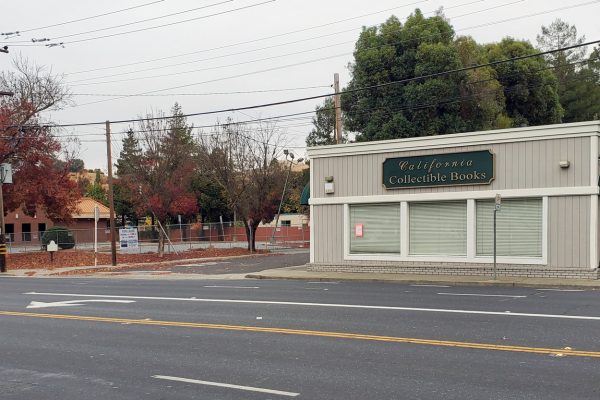MARTINEZ, Calif. – Martinez has a budgetary structural deficit that, if left unaddressed, will get worse as California Public Employees Retirement Service (CalPERS) costs rise. It also will take both a one-time hit as well as new ongoing costs caused by the dissolution of the Pleasant Hill-Martinez Joint Facilities agency (JFA.)
That’s the update presented Wednesday to the City Council by David Glasser, the city’s new director of finance.
Martinez isn’t going broke, but because expenses are outrunning revenues, its reserves will be threatened before long, he said.
The city has a policy of maintaining a 20 percent fund balance in General Fund unassigned reserves, which may be used for one-time expenses and which serve as the city’s “rainy day” fund for emergencies or unforeseen circumstances. Reserves aren’t designed to be used for ongoing expenses.
Through the end of Fiscal Year 2019-20, the city’s fiscal picture shows no threat to those reserves. However, by 2020-2021, Martinez may need to reduce its spending by nearly 1.4 million – or raise that much more in revenues – to maintain the 20 percent fund balance, Glasser told the Council.
That may sound far off, but in municipal financial planning, “that’s tomorrow,” he said. And the imbalance of revenues and expenditures “needs to be addressed.”
Martinez currently has healthy reserves, in part because the Council has been conservative in its spending. As Mayor Rob Schroder and Councilmember Mark Ross told the Council Wednesday, when they first were elected to the Council, the city’s reserves were a mere $1,500. In Fiscal Year 2015-16, it had grown to $9.8 million.
But those reserves have been declining steadily, in part to cover a grown operating deficit that went from a negative $133,532 in Fiscal Year 2016-17 to a negative $459,900 in the current budget year to a projected $1.1 million deficit for Fiscal Year 2018-19. By Fiscal Year 2021-22, that deficit is projected to exceed $3.3 million.
In the next three years, Martinez faces a projected $1.5 million increase in CalPERS expenses, if forecasts using numbers from the California Society of Municipal Finance Officers (CSMFO) and the League of California Cities hold true.
In addition, the CalPERS Discount Rate will be lowered from 7.5 percent to 7.0 percent during a three-year period, Glasser said. “We expect to earn less from CalPERS, so we have to pay more in benefits,” he explained.
“We need to increase revenues or decrease spending just for CalPERS alone,” Vice Mayor Lara DeLaney said.
“Yes,” Glasser replied.
Martinez isn’t alone in this. Nearly every city in the state belong to CalPERS, a $360 billion agency.
A report on public employee pensions, issued in February, said most California cities expect to spend at least 50 percent more on retiree benefits during the next seven years, and some cities have complained that pension cost hikes threaten their ability to pay other expenses or provide services to residents.
The League surveyed about 170 cities for its study, which showed that by 2024, many municipalities expect that nearly 16 percent of their General Fund budgets would be dedicated to pensions. That’s nearly double what they were paying a decade ago.
Bartel Associates, whose president, John Bartel, recently spoke to the Council about CalPERS’s rising costs, has predicted that city pension costs ultimately would increase to unsustainable levels.
At one time, pooling resources to cover pension costs appeared to make sense. The money was invested when interest returns were stronger.
But as interest rates dropped, and particularly during the recession, CalPERS lowered its investment forecast.
As a result, participating governmental agencies have been required to pay more for their retired employees’ pensions.
Even though investment returns have improved in recent months, CalPERS’s assets are worth only 68 percent of what it owes to retired public employees.
Governor Jerry Brown signed a law that eliminated more generous retirement plans offered through legislation during the pre-recession boom. But that applies only to those hired after Jan. 1, 2013. Brown also wants to allow local agencies to withdraw past pension agreements without offering other forms of compensation.
Glasser said that while CalPERS is shortening its amortization period for folding in losses from 30 to 20 years, the retirement service is moving to improve the situation, and reminded the Council that City Manager Brad Kilger has recommended formulating a 10-year financial forecast, to keep an eye on fiscal trends and fund balances.
Another factor in city finances is the dissolution of the Martinez-Pleasant Hill JFA, which will cost the city a yet uncalculated one-time expense Glasser categorized as “big.” The dissolution also will be an ongoing expense as well, he said.
A 2015 audit indicated that 92 city employees must begin paying into Social Security, costing the employees more than 6.2 percent of their wages and a match from the city that could go as high as $420,000, according to officials speaking at the time.
But CalPERS had questioned the arrangement as far back as 2012, when its chief of Audit Services, Margaret Junker said compensation hadn’t been reported correctly and eligible part time employees hadn’t been enrolled in membership. That review didn’t comment whether employees worked for the JFA, a Social Security-exempt agency, or for Martinez.
That comment came in 2015, when Acting Chief of the Office of Audit Services Young Hamilton issued a report that the 92 employees from Martinez must pay into Social Security, and that the city must match their contributions, because the joint agency apparently didn’t exist.
The Council has been meeting in closed sessions on the matter, and City Manager Brad Kilger said he hoped the city would have it resolved in the next month or so.
“We don’t have all the numbers,” he said. But he said he expects the city to have a structural deficit of $1.3 million to $2 million before long. “Any good news is we have time to work it out,” he said.
Most of Martinez’s revenues come from property and sales taxes, Glasser said, and changes in that income come longterm, and not swiftly. A mid-year budget review has indicated property tax revenues are improving, but General Fund sales tax revenues are fairly flat.
“The growth in property taxes is expected to continue,” he said, but cautioned the growth would be gradual – about 2 percent, Kilger added.
Mayor Rob Schroder said the Council may consider a revenue measure as it struggles to fill police vacancies and provide homeless services, a topic about which the panel heard plenty from the public Wednesday night.
He said he was heartened that more than two-thirds of city voters supported a half-cent sales tax dedicated to local road repairs, but acknowledged it’s easier to pass a general revenue measure, which only requires a simple majority’s approval.
Another revenue source could be commercial cannabis operations, “but I’m not saying the city should sell its soul,” Schroder said.
DeLaney called CalPERS increases a “very difficult challenge,” and urged the Council to show it is serious about expense cuts by giving up members’ stipends and benefits. “We have to put revenue measures on the table,” she added. “We have to be serious here.”
Councilmember Noralea Gipner said one revenue solution is infill construction. “We have to make it easier for developers to do it,” she said.
Councilmember Debbie McKillop said she wanted to make sure public safety remains the Council’s top concern. “We have to make decisions about public safety. I’d like to make sure citizens are safe in this day and age.”
As for what Ross called “the tsunami” of CalPERS and JFA costs, he said the Council will “have to face it” and pay the expenses that had come from decisions made long ago.
Meanwhile, Kilger said city employees would continue developing the long range forecasts and keep fine-tuning expected changes in the current budget in preparation for the next report to the Council. “Compared to other cities, we have time to address this,” he said. “I’m thankful for that.”




